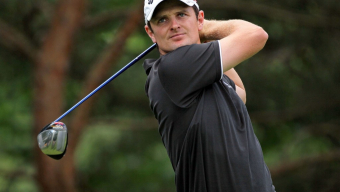PGA TOUR Statement on Justin Rose
After further review of the 2-stroke penalty given to Justin Rose during the third round of THE PLAYERS Championship for a violation of Rule 18-2B and subsequent failure to replace the ball in the original place, the PGA Tour Rules Committee has rescinded the penalty with Rose, who now enters the final round at 7-under-par. He will remain in his original pairing at 12:35 with Brian Stuard.
At the time of the review immediately following Rose’s round, in which Rose participated, it was thought that Decision 18/4 (Television Evidence Shows Ball at Rest Changed Position But by Amount Not Reasonably Discernible to Naked Eye) a copy of which is attached, was not applicable because the review of the footage shown in the telecast showed that the ball may have moved in a way that was discernable to the naked eye and when viewing the incident with Rose in the television compound, it was confirmed that the ball did in fact move very slightly. Thus, at the time, the Rules Committee deemed that the ball had moved in a manner that was reasonably discernable to the naked eye. The Committee, therefore, assessed the general penalty under Rule 18 of two strokes.
Overnight, given the fact that Decision 18/4 had been implemented in January of 2014, yet had not been utilized in PGA Tour competition, the Rules Committee reopened the incident and focused on how much the use of sophisticated technology played a part in making the original ruling. After that review, it was determined that the only way to confirm whether and how much the ball had in fact changed position, was to utilize sophisticated technology.
This morning, after consulting with the governing bodies and PGA Tour Commissioner Tim Finchem, it was determined that without the use of sophisticated technology, it was not reasonably discernable to the naked eye that the ball had left its original position and had come to rest in its original place. Thus, the player’s determination that the ball had not moved was deemed to be conclusive and the penalty does not apply in this situation. Having reached this decision, the Committee immediately notified Rose and rescinded the 2-stroke penalty.
Decision 18/4: Television Evidence Shows Ball at Rest Changed Position But by Amount Not Reasonably Discernible to Naked Eye
Q. A player addresses his ball. He observes a slight motion of the ball but believes that it has only oscillated and has not left its original position. He therefore plays the ball as it lies. Later, the Committee becomes aware from television evidence that the ball had in fact left its position and come to rest in another place, although that change of position was such that it was not reasonably discernible to the naked eye at the time of the incident. What is the ruling?
A. The ball is deemed not to have moved and therefore there is no penalty under Rule 18-2b. The Definition of “Moved” – when a ball “leaves its position and comes to rest in any other place” – does not contemplate movements of the ball that are only discernible through the use of high definition television or any other form of sophisticated technology.
When determining whether or not his ball at rest has moved, a player must make that judgment based on all the information readily available to him at the time, so that he can determine whether the ball must be replaced under Rule 18-2b or another applicable Rule. When the player’s ball has left its original position and come to rest in another place by an amount that was not reasonably discernible to the naked eye at the time, a player’s determination that the ball has not moved will be deemed to be conclusive, even if that determination is later shown to be incorrect through the use of sophisticated technology.
On the other hand, if the Committee determines, based on all of the evidence it has available, that the ball changed its position by an amount that was reasonably discernible to the naked eye at the time, the ball is deemed to have moved. As the player did not replace the ball, he incurs a penalty under the applicable Rule and Rule 20-7c for playing from a wrong place.
These principles apply to any review of technological evidence by the Committee, whether before the player makes his next stroke or any time thereafter. These principles also apply in a situation in which the player made no determination whether or not his ball at rest moved (e.g., because he had walked away from his ball after addressing it, was not looking at his ball, or otherwise did not observe any motion of the ball or have any reason to believe that his ball might have moved).
Before determining whether his ball has moved, it is advisable for the player to obtain information from nearby witnesses to the incident and to seek guidance from a referee if one is immediately available. (New)





















